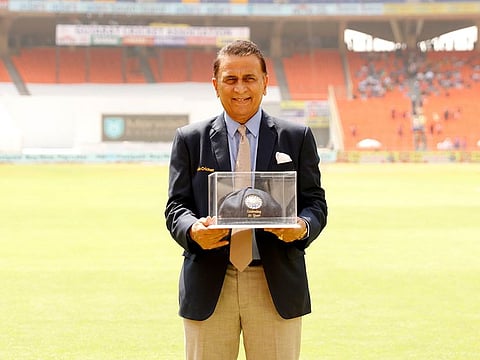This day, that year: When Sunny days began in Indian cricket
March 6 completes 50th anniversary of Sunil Gavaskar’s Test debut in West Indies

Kolkata: What is the significance of March 6, 1971? It must have been a favourite poser for the sports quiz masters to be thrown at Gen-X followers of the game, but memories were rekindled at the lunch break at Ahmedabad Test on Saturday - it’s been 50 years since the ‘Sunny Days’ began in Indian cricket at the Port of Spain in Trinidad, West Indies.
It’s not often that the date of a legendary cricketer’s international debut is celebrated with such fanfare. However, how would you look at it’s significance if the arrival of a slightly built, 21-year-old opening batsman from Mumbai also heralded the birth of a cricketing nation who first got the taste of an overseas Test series win - that too against Sir Garfield Sobers’ awesome West Indies?
The Class of ‘71, led by a taciturn Ajit Wadekar, had been bit of a lost generation in Indian cricket. It’s only the grey-haired fans of the game who marvel on what was nothing short of a miracle that year when after decades of carrying the tag of poor travellers, India came up with series wins in the Caribbean as well as England. Yes, the 1983 World Cup was certainly the watershed moment which took the game to every drawing rooms of Indian household, but the twin series triumphs of 1971 were the first underdog stories for them.
It’s in this context that Gavaskar’s historic debut is so significant - a total of 774 runs with four centuries and three fifties, with an average of 154.80 - how often have you seen that in a debut series? In a career spanning over 17 years, the original Little Master had always a ‘fondness’ for the West Indies attack by scoring 13 of his 34 centuries against them - and the Caribbeans have returned the ‘compliments’ by scripting a Calypso in his name.
If India boasts of a great batting lineage in today’s game, Gavaskar had begun this wonderful progression by doing this his way - with an extraodinary mix of the right technique of the Mumbai school of batting and powers of concentration. The bed rock of his batting philosophy revolved around building an innings - which is why the 71-year-old still gets livid at any rash and irresponsible shot by the modern batsmen in his role as the TV pundit - irrespective of the format,
Time for waits for no one, and the childhood hero of my generation is no exception. If there is a definition of ‘Mr Cricket’ in India, it will rest with him for good - a pedestal which can have a parallel perhaps only with Sir Don Bradman in Australia. It’s been more than three decades that Gavaskar has quit the game but his ability to stay relevant in this age of instant gratification - where social media rules everything - is simply amazing.
While he is still one of the most sought-after names in the Com Box where much younger former cricketers are fast carving their own niche, Gavaskar’s columns (always written by himself) had continued uninterrupted for a period of 28 years at one point till he had to discontinue it as per the BCCI protocol when he served a short stint as the board president.
The current avatar of Gavaskar has been often criticised for toeing the establishment line a bit too much for his own benefits, and he is fully aware of it. A fitting reply came from him on Saturday in an interview: ‘‘All those who feel that way weren't even born in the 70s when I was taking up the players’ cause with the BCCI.’’
Point taken, sir!
Sign up for the Daily Briefing
Get the latest news and updates straight to your inbox







